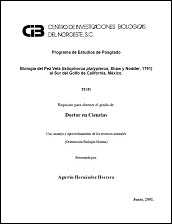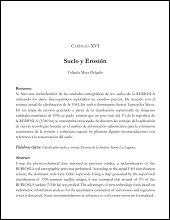Ecological and Physiological Studies of Gymnodinium catenatum in the Mexican Pacific: A Review
Autor
CHRISTINE JOHANNA BAND SCHMIDT
JOSE JESUS BUSTILLOS GUZMAN
DAVID JAVIER LOPEZ CORTES
Ismael Gárate-Lizárraga
ERICK JULIAN NUÑEZ VAZQUEZ
FRANCISCO EDUARDO HERNANDEZ SANDOVAL
Metadatos
Mostrar el registro completo del ítemResumen
"This review presents a detailed analysis of the state of knowledge of studies done in Mexico related to the dinoflagellate Gymnodinium catenatum, a paralytic toxin producer. This species was first reported in the Gulf of California in 1939; since then most studies in Mexico have focused on local blooms and seasonal variations. G. catenatum is most abundant during March and April, usually associated with water temperatures between 18 and 25 ºC and an increase in nutrients. In vitro studies of G. catenatum strains from different bays along the Pacific coast of Mexico show that this species can grow in wide ranges of salinities, temperatures, and N:P ratios. Latitudinal differences are observed in the toxicity and toxin profile, but the presence of dcSTX, dcGTX2-3, C1, and C2 are usual components. A common characteristic of the toxin profile found in shellfish, when G. catenatum is present in the coastal environment, is the detection of dcGTX2-3, dcSTX, C1, and C2. Few bioassay studies have reported effects in mollusks and lethal effects in mice, and shrimp; however no adverse effects have been observed in the copepod Acartia clausi. Interestingly, genetic sequencing of D1-D2 LSU rDNA revealed that it differs only in one base pair, compared with strains from other regions."
Colecciones
Ítems relacionados
Mostrando ítems relacionados por Título, autor o materia.
-
PROMOCIÓN DEL PERIFITON PARA EL CULTIVO DE CAMARÓN BLANCO: HACIA UNA ACUICULTURA ECOLÓGICA
DOMENICO VOLTOLINA LOBINA; JUAN MANUEL AUDELO NARANJO; MARIA DEL ROSARIO PACHECO MARGES -
Suelo y Erosión
YOLANDA LOURDES MAYA DELGADO


